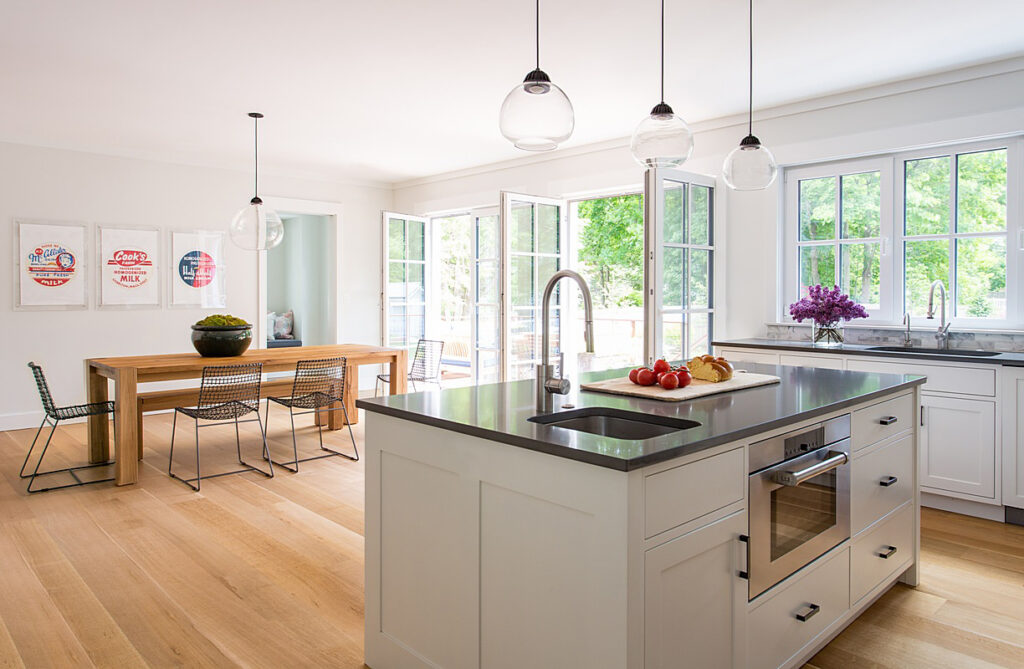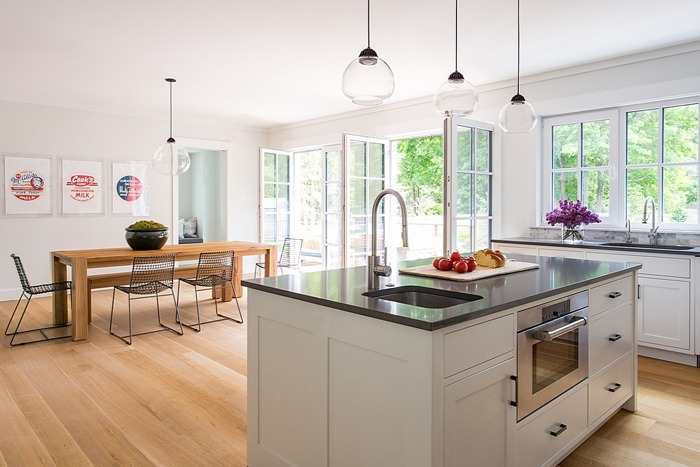Today most homeowners want to do right by the environment while also caring for the health and wellness of their own families. But they don’t always know what measures they can take with the design, construction, and furnishing of their houses to achieve eco-friendly, health-enhancing results.
“Many responsible consumers are uncertain what a ‘sustainable’ product or material is,” notes Linda Jovanovich of the American Hardwood Information Center. “It simply means the particular resource is self-replenishing—something we can use freely now without fear its supply will run out in the future. Since American hardwood forests renew themselves almost twice as fast as they are harvested, the U.S. supply of hardwoods for flooring, furniture, cabinetry, and millwork is sustainable now and for generations to come.”
As well as being plentiful and sustainable, American hardwood is carbon neutral: Growing trees absorb carbon dioxide from the atmosphere and break it down into oxygen, which is returned to the air, and carbon, which is used to create roots, trunk, branches, and leaves. In short, the use of natural American hardwoods throughout a house helps with the long-term removal of carbon from the environment.
Hardwood can also benefit a household’s general well-being. When artist Hadley Williams renovated her family home in California’s Bay Area, she asked the makeover team—designer Sherry Williamson, architect Andrew Mann, and builder Michael McCutcheon—for a clean-lined, ultra-eco-friendly residence. They wrapped all the floors, ceilings, walls, and casework in the gutted interiors with plain-sawn American white oak, achieving a beautiful balance between aesthetics, sustainability, and healthfulness. Since the latter was a priority, each and every building product used was screened for a comprehensive list of more than 900 chemicals of concern. Using solid timber helped avoid the unhealthy volatile organic compounds (VOCs) found in laminate glues. Thanks to those efforts, the house has been certified LEED Platinum—the U.S. Green Building Council’s highest ranking.

Quarter-sawn white-oak flooring joins a custom solid-oak table in the kitchen-dining area of an LEED-platinum certified house near Boston by ZeroEnergy Design. Photograph by Eric Roth
Architect Stephanie Horowitz of Boston-based ZeroEnergy Design is another expert at creating contemporary, environmentally sensitive, family-friendly homes. “We regularly specify domestic, sustainably harvested hardwood floors,” she says. “When paired with a non-VOC finish, a hardwood floor helps maintain healthy indoor-air quality while allowing us to support local business and overall environmental health.” Such was the case with a house she recently designed for a client who wanted an exceptionally healthy and comfortable living environment in a traditional neighborhood. By installing quarter-sawn white-oak floors, and selecting other durable materials and finishes with low or no VOCs and no added urea formaldehyde, Horowitz was able to achieve LEED-platinum certification for the house and, more importantly, ensure its inhabitants can breathe easy.




